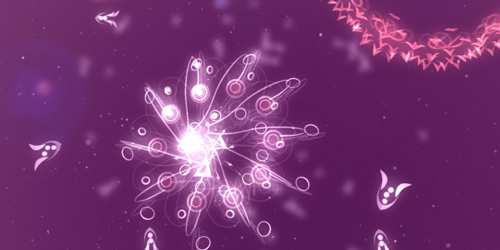
One of the unfortunate drawbacks of the modern game creation process is the loss of stylistic lineage that can be traced directly back to a company or even a single person. Directorial influence can be difficult to discern when there are dozens if not hundreds of people involved in the creation of a game.
Of course it didn’t use to always be this way. One only needs to go back two decades or so, when games were created by small teams or even a single person to see how influences could be attributed. It was not unusual for publishers on these older systems to directly tell gamers who was responsible for the game on the box much like movies with their “directed by” bylines.
Recent indie games harken back to those days. It’s easy to tell the difference between Edmund McMillen game and a Nifflas game. And no person or company for that matters best displays this singleminded adherence to a particular style then Jenova Chen and thatgamecompany.

Last week’s release of Flower for the PSN is the 2nd official release for thatgamecompany and the 3rd in a line of games that clearly demonstrate the similar design principles and concepts. These games (Cloud, flOw, and now Flower) in one way or another derive influence from Chen’s thesis on flow in games.
The thesis is mainly concerned with how to optimize changes in game difficulty to accommodate the best experience for players. But I feel the particular style that thatgamecompany’s games have adhered to this point have expanded beyond just that. Game difficulty still is largely in the player’s control, but these games have also minimized the chance of failure or outright done away with the idea. Players can do better or worse in these games based on their own metrics, but the game doesn’t consider or punish or reward players for better or worse play other than an increasing the visual and audio stimulus. The end result is a relaxing environment where players are free to explore, experiment, and do nearly whatever they please at their own accord.

Cloud, flOw, and Flower also focus heavily on the audio and visual components to entice players into this state of ease. The graphics tend to favor the bright and well-lit, there’s a softness to their images that takes the edge off. The audio is similar, the music and sound effects are warm and inviting, stuff that wouldn’t necessarily be out of place in a New Age album. In some moments there are even hints of a bit of procedural music as the sound effects are chimes and notes that tie into the main melodies in a soothing way.
Styles are useful and important. Useful because they allow players to implicitly follow and trust release to release from a company or person. Companies like EA or Ubisoft are too large to have a company-wide style. Even the individual dev teams from these companies have to many cooks in the kitchen to effectively parse, at best you hope that certain directors or designs you know and trust can keep the soup from turning out bad. But when there’s a new release from thatgamecompany people already know a lot of what they’re going to get. And fans of previous games can take comfort in trying out newer or older releases with that knowledge in hand.
And these game styles I feel are important for the maturation of games as art. It becomes important for us as consumers of games, as observers of games, and critics of games to see such direct descendants from game to game. Going from Cloud to flOw to Flower you can see the changes, the lessons learned, and the subtle nuances each new game adds or subtracts as the company, the development team, and the creator grow into their own. These personal styles for a company or specific developer/designer aid in this analysis.
It’s a wonderful aesthetic and style that thatgamecompany has found for itself and its a wonder that they’ve taken such a contrary position to just about all the norms established in the game industry and managed to find themselves Sony’s poster boy for the PSN network and their own indie contingent. Here’s to more “flow”-ful games in the future.
Leave a Reply